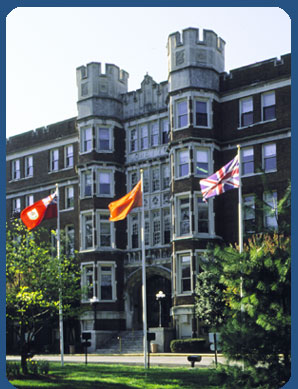| Women's Intellectual Contributions to the Study of Mind and Society Students, as part of an advanced seminar, examined and wrote about the lives of these women,
their intellectual contributions, and the unique impact and special problems that being female had
on their careers. |  |
| For information about referencing this paper - Click Here |

Charlotte Perkins Gilman
Charlotte Anna Perkins was born July 3, 1860 in Hartford, Connecticut. Her
father was a member of the Beecher family, which was a relatively big deal.
The Beechers were probably the most famous family in the United States at
the time. Harriet Beecher Stowe, the author of Uncle Tom's Cabin; Isabella
Beecher Hooker, a famous suffragist; and Catharine Beecher, an educator and
author of A Treatise on Domestic Economy were all Charlotte's great aunts,
and she counted Henry Ward Beecher, pastor of the Plymouth Church of
Brooklyn as her uncle.
Her father, compared to the majority of his famous family, was not quite so
successful. He dropped out of Yale and had a relatively difficult time
attempting to figure out what he wanted from life. He married twenty-nine
year old Mary Ann Fitch Westcott, a beautiful, musically gifted, and
properly educated woman, only after his first choice for a wife denied him.
This was hardly a promising start to a marriage (Lane, 1990).
Mary Ann had three children in rapid succession, one of which died in
childhood. After her third child was born, she was told that she might die
if she attempted to have anymore. As a result, Charlotte's father left home
and took the value of the Beecher name with him. Charlotte, her brother,
and her mother were regarded as poor relations and charity relatives (Lane).
Charlotte's mother denied her any and all expression of affection, which
aided Charlotte in learning to deny her emotions and sexuality later in life
and caused her to swear never to marry (Lane, 1990).
In 1882, she met Charles Walter Stetson, who was a bohemian artist with
surprisingly conventional attitudes about a woman's place. Charlotte fell
completely in love with him but felt she needed to remain free (i.e. single)
in order to accomplish what she wanted and needed in her life. However, she
eventually decided to marry him, and they wed on May 2, 1884.
The two had a daughter, Katharine, who was born March 23, 1885. Charlotte
immediately fell into a deep depression.
In her journal, she writes, "I would hold her close - that lovely child! -
and instead of love and happiness, feel only pain. Nothing was more utterly
bitter than this, that even motherhood brought no joy" (Forerunner, 271).
In April of 1887, Charlotte felt compelled to go away to "get better." She
had heard of a doctor named Silas Weir Mitchell, who was at a sanatorium
right outside of Philadelphia.
The treatment subjected Charlotte to 1) extended and total bed rest; 2)
isolation from family and familiar surroundings; 3) overfeeding (said to
increase body volume and energy); and 4) massage and use of electricity for
"muscular excitation" (Lane, 1990).
Eventually, Mitchell declared Charlotte cured, and sent her home with these
instructions: live as domestic a life as possible, have your child with you
at all times, lie down an for an hour after each meal, have but two hours
intellectual life a day, and never touch pen, brush, or pencil as long as
you live.
To this, Charlotte responded in her journal, "I went home, followed those
directions rigidly for months, and came perilously near to losing my mind"
(Forerunner, 1913).
Her post-sanatorium experience is famously documented in the fictitious
short story "The Yellow Wallpaper," serialized in her Forerunner magazine.
After Charlotte's return home, she realized that she was still unhappy, and
she and Charles decided to separate. However, she was not able to leave him
for another year, at which point she and Katharine fled to California.
In 1898, Gilman wrote what she considered her most important work: Women and
Economics: The Economic Relation Between Men and Women as a Factor in Social
Evolution, which established her immediate international reputation.
She married George Houghton Gilman in 1900, a cousin of hers. In the next
thirty five years, she wrote Concerning Children (1900), The Home: Its Work
and Influence (1903), Human Work (1904), Herland (which was serialized in
1915 but not published until the 1970s), His Religion and Hers: A Study of
the Faith of Our Fathers and the Work of Our Mothers (1923), and her
autobiography, The Living of Charlotte Perkins Gilman (1935) - which was
published a few months after her death.
In 1935, after learning that she was dying of cancer, Charlotte Perkins
Gilman chloroformed herself to death.
Works cited:
-
Forerunner, 1913.
- Lane, Ann J., To Herland and Beyond. Pantheon Books, 1990. New York.
Other reading:
- Allen, Polly Wynn. Building Domestic Liberty. University of Massachusetts
Press,
1988. Amherst.
Back to Women's Page